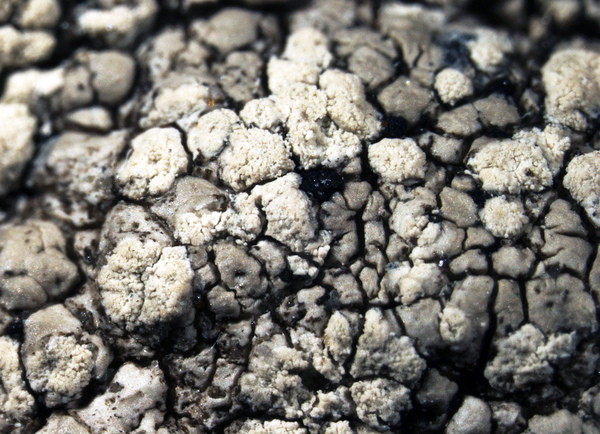Lecanora cenisia f. soredians (Suza) Malíček
in Malíček & al., Lichenologist, 49: 440, 2017.. Basionym: Lecanora cenisia var. soredians Suza - Sb. Klubu Přírod. v Brno, 11: 152, 1929 (1928).
Synonyms: Lecanora caesiosora Poelt; Lecanora cenisia var. soredians Suza; Lecanora soralifera H. Magn. non (Suza) Räsänen
Distribution: N - TAA (Nascimbene & al. 2022), Piem.
Description: Thallus crustose, episubstratic, white, grey or brownish grey, rimose or consisting of more or less contiguous, sorediate, convex areoles, rarely delimited by a pale prothallus. Soralia (0.5-)1-2(-3) mm wide, slightly to strongly convex, whitish, yellowish white or greenish yellow, rarely pale bluish grey, with farinose, (15-)20-25(-40) μm thick soredia. Apothecia rare, lecanorine, 0.5-0.8(-1) mm across, with a dark brown to black, often slightly pruinose disc, and a persistent, smooth, sometimes sorediate thalline margin. Thalline exciple rich in algae, with large crystals visible under polarized light, rarely without crystals; epithecium brown, with coarse crystals visible under polarized light; hymenium colourless, 45-65 μm high; paraphyses coherent, c. 1.5 μm thick at mid-level, the apical cells slightly swollen, to 2 μm wide; hypothecium colourless. Asci 8-spored, broadly clavate, very thin-walled, with a K/I+ blue, tall tholus penetrated by a faintly amyloid apical cushion, the wall K/I-, surrounded by a blue outer layer, Lecanora-type. Ascospores 1-celled, hyaline, ellipsoid, 11-15 x (6-)7-9 μm. Pycnidia black, immersed. Conidia thread-like, curved, 20-25 μm long. Photobiont chlorococcoid. Spot tests: thallus and soredia K+ yellow, C-, KC-, P- or P+ yellowish, UV-. Chemistry: atranorin, chloratranorin, plus variable amounts of roccellic and nephrosteranic acid. Note: on hard siliceous rocks in upland areas, more rarely on the bark of subalpine shrubs; very much overlooked, but certainly not common. For further details see Malíček & al. (2017).
Growth form: Crustose
Substrata: rocks
Photobiont: green algae other than Trentepohlia
Reproductive strategy: mainly asexual, by soredia, or soredia-like structures (e.g. blastidia)
Species of metal-rich rocks
Commonnes-rarity: (info)
Alpine belt: absent
Subalpine belt: very rare
Oromediterranean belt: absent
Montane belt: very rare
Submediterranean belt: absent
Padanian area: absent
Humid submediterranean belt: absent
Humid mediterranean belt: absent
Dry mediterranean belt: absent

Predictive model
Growth form: Crustose
Substrata: rocks
Photobiont: green algae other than Trentepohlia
Reproductive strategy: mainly asexual, by soredia, or soredia-like structures (e.g. blastidia)
Species of metal-rich rocks
Commonnes-rarity: (info)
Alpine belt: absent
Subalpine belt: very rare
Oromediterranean belt: absent
Montane belt: very rare
Submediterranean belt: absent
Padanian area: absent
Humid submediterranean belt: absent
Humid mediterranean belt: absent
Dry mediterranean belt: absent

Predictive model
 DOLICHENS
DOLICHENS




